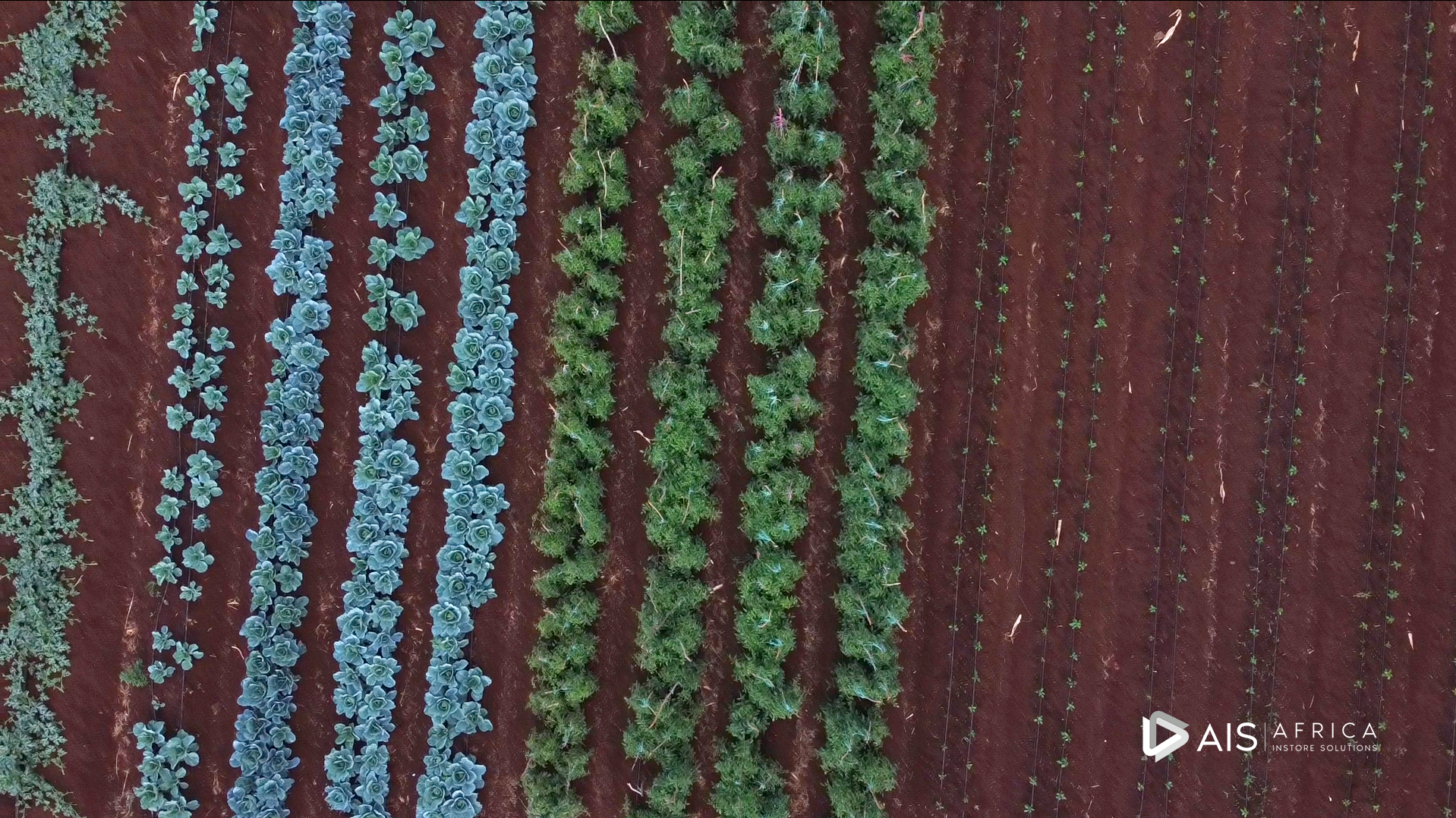
Africa’s diverse climate and fertile soil are rich in agricultural potential. This potential can be maximized through sustainable farming practices, including crop rotation. At Africa Instore Solutions (AIS), we recognize the pivotal role of this age-old technique in promoting soil health, enhancing yield quality, and ensuring the long-term prosperity of farming communities.
If you’re a small-scale farmer looking to improve your crop yield and sustainability, this blog is for you.
The benefits of crop rotation for sustainable farming
Crop rotation systematically plants different crops in the same area over sequential seasons. This practice dates back to Roman times and has been proven to increase crop yield and improve soil health. It breaks pest and disease cycles, enhances soil fertility and structure, and promotes biodiversity.
In a small-scale farming context, crop rotation means more than just alternating between different types of crops yearly. It’s about understanding the needs of your soil and the benefits each crop brings. When done right, crop rotation can lower your input costs, minimize the risk of crop failure, increase productivity, and ensure a steady supply of diverse food all year round.
Here are the detailed benefits of crop rotation:
Soil enrichment and nutrient balance
By alternating plant species seasonally, farmers mitigate the risk of depleting specific nutrients from the soil. Legumes, for instance, are known to fix nitrogen, enriching the soil naturally and reducing the dependence on synthetic fertilizers.
Pest and disease management
Crop rotation acts as a natural defense mechanism against pests and diseases. Different crops attract pests, and farmers disrupt the life cycle of harmful organisms by changing the planting arrangement each season.
Weed suppression and soil structure improvement
Monoculture often leads to weed proliferation, creating a constant battle for farmers. With crop rotation, weeds that thrive on specific crops find a sterile environment in the following season. Additionally, certain crops improve soil structure by breaking up compacted soil layers, promoting better water retention and drainage. This approach ensures efficient land use and contributes to sustainable land management.
Increased yield and income stability
Diversity is the key to resilience in agriculture. Crop rotation minimizes the risk of total crop failure by spreading potential losses across different crops. This ensures a more reliable income for farmers and strengthens their ability to weather unpredictable climatic conditions.
Environmental conservation and biodiversity
Farming nurtures the environment, and crop rotation aligns with this philosophy by promoting biodiversity. Diverse crop rotations create a mosaic of habitats that support beneficial insects and microorganisms, contributing to a healthier ecosystem.
Climate change mitigation
Climate change significantly threatens agriculture, particularly in Africa, where farming is primarily rain-fed. However, crop rotation can play a vital role in mitigating its effects. Different crops have varying root depths and nutrient requirements. By rotating crops, you enhance the soil’s ability to hold water and reduce erosion — two crucial factors in climate change resilience.
Moreover, some crops used in rotation, such as legumes, can fix atmospheric nitrogen in the soil. This reduces the need for synthetic fertilizers, significant contributors to greenhouse gas emissions. Thus, by implementing crop rotation, you’re improving your farm’s productivity and contributing to global efforts against climate change.
Implementing crop rotation in small-scale farming
Planning and implementing a successful crop rotation system requires understanding your land, climate, market demand, and the crops you intend to grow. Here’s a step-by-step guide to help you:
Start with soil testing: This will help you understand your soil’s current nutrient levels and pH, which will guide your choice of crops.
Choose your crops wisely: Different crops have different nutrient needs and benefits. Some deplete certain nutrients from the soil, while others replenish them. For example, legumes add nitrogen to the soil, making it fertile for subsequent crops that need nitrogen.
Plan your rotation: A simple rotation might involve alternating between legumes and cereals/grains. However, a more advanced rotation could include crop categories such as root crops and leafy vegetables.
Keep records: Documenting what you plant and where each season will help you track the effectiveness of your rotation system and make necessary adjustments in the future.
Challenges of crop rotation and how to overcome them
Implementing crop rotation is not without challenges. These may include a lack of knowledge of the best crop rotation, unavailability of specific seed types, or resistance from family members to planting certain crops.
However, these challenges can be overcome. Start by educating yourself and your family about the benefits of crop rotation. Contact agricultural extension officers or research online for information on suitable crops for rotation in your area.
As for seed availability, consider joining farmer cooperatives or groups where seeds can be shared or purchased at lower prices. Remember, the initial challenges are worth considering crop rotation’s long-term benefits.
Conclusion
Crop rotation is a powerful tool for small-scale farmers. It increases yield, improves soil health, and contributes to climate change mitigation efforts. While implementing crop rotation may seem daunting at first, proper planning and commitment can be a game-changer for your farm’s productivity and sustainability.
At Africa Instore Solutions, we’re dedicated to helping small-scale farmers thrive. Don’t hesitate to contact us for further guidance and resources on crop rotation and other sustainable farming practices. Together, we can make Africa’s agriculture more sustainable and resilient.
